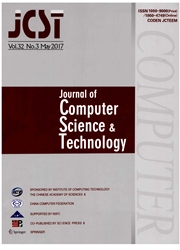

 中文摘要:
中文摘要:
与在嵌入的系统的设计复杂性的开发,划分的硬件 / 软件(HW/SW ) 成为挑战性的优化在 HW/SW 的问题合作设计。A 基于位置划分方法的新奇 HW/SW 与侵略杂草扰乱了粒子群优化优化(PDPSO-IWO ) 被介绍在里面这份报纸。它被地面松鼠生产的生物学家发现惊动当有潜在的食肉的威胁时,叫哪个离开警告他们的同伴到行动。这里,我们现在的 PDPSO 算法,逃离全球最糟的粒子的松鼠行为其每次重复能被模仿到增加人口差异并且避免本地最佳在里面。我们也介绍新初始化并且为寻找一个更好的位置,全球最好的位置能与被更新改进 IWO 算法的繁殖策略。然后,搜索精确性和答案质量能被提高。PDPSO 和改进 IWO 被综合进一挑选 PDPSO-IWO 算法,它能保留两个都寻找的多样化和寻找的增强。而且,一个混合 NodeRank (HNodeRank ) 算法被建议初始化 PDPSO-IWO 的人口,并且答案质量能进一步被提高。因为 HW/SW 通讯花去计算,为 HW/SW 的最费时间的过程正在划分算法,我们采用 GPU 加速计算的平行技术。这样,为划分的大规模 HW/SW 的 PDPSO-IWO 的运行时刻问题能高效地被减少。最后,从划分的最先进的出版物和大规模 HW/SW 的基准的多重实验证明建议算法能比另外的算法完成高效。
 英文摘要:
英文摘要:
With the development of the design complexity in embedded systems, hardware/software (HW/SW) partitioning becomes a challenging optimization problem in HW/SW co-design. A novel HW/SW partitioning method based on position disturbed particle swarm optimization with invasive weed optimization (PDPSO-IWO) is presented in this paper. It is found by biologists that the ground squirrels produce alarm calls which warn their peers to move away when there is potential predatory threat. Here, we present PDPSO algorithm, in each iteration of which the squirrel behavior of escaping from the global worst particle can be simulated to increase population diversity and avoid local optimum. We also present new initialization and reproduction strategies to improve IWO algorithm for searching a better position, with which the global best position can be updated. Then the search accuracy and the solution quality can be enhanced. PDPSO and improved IWO are synthesized into one single PDPSO-IWO algorithm, which can keep both searching diversification and searching intensification. Furthermore, a hybrid NodeRank (HNodeRank) algorithm is proposed to initialize the population of PDPSO-IWO, and the solution quality can be enhanced further. Since the HW/SW communication cost computing is the most time-consuming process for HW/SW partitioning algorithm, we adopt the GPU parallel technique to accelerate the computing. In this way, the runtime of PDPSO-IWO for large-scale HW/SW partitioning problem can be reduced efficiently. Finally, multiple experiments on benchmarks from state-of-the-art publications and large-scale HW/SW partitioning demonstrate that the proposed algorithm can achieve higher performance than other algorithms.
 同期刊论文项目
同期刊论文项目
 同项目期刊论文
同项目期刊论文
 期刊信息
期刊信息
